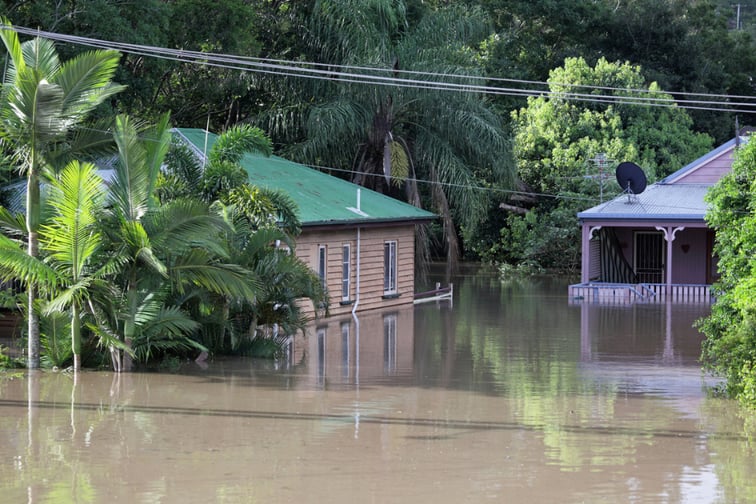

The Insurance Council of Australia (ICA) has claimed that the devastating flooding in southeast Queensland (Qld) and coastal New South Wales (NSW) in February and March 2022 is the costliest flood to ever strike the country.
As of May 3, the ICA reported that insurers received 197,000 claims across both states, with an estimated cost of $3.35 billion in insured losses – making the event the costliest flood in Australia's history and the fifth costliest disaster after the Eastern Sydney Hailstorm in 1999 ($5.57 billion), Cyclone Tracey in 1974 ($5.04 billion), Cyclone Dinah in 1967 ($4.69 billion), and the Newcastle Earthquake in 1989 ($4.24 billion).
“We knew that this year's east coast flooding was one of the biggest floods in our history, but these updated numbers show that in monetary terms, it was, in fact, the biggest ever,” said ICA CEO Andrew Hall.
In its initial estimate of insured market loss released in April 2021, PERILS, an independent organisation providing industry-wide catastrophe insurance data, reported a $3,991 million insurance loss, covering two lines of business.
The ICA confirmed that insurers have already closed 11% of claims and paid out $580 million to policyholders. It explained that the rise in claims costs was driven by higher costs in the personal property, personal contents, and commercial property classes, reflecting the increased cost of materials and a challenging supply chain environment.
As Qld and NSW communities recover from the catastrophic flooding, and insurers and governments come up with ways to make Australian homes more resilient, the ICA is calling for state and federal governments to commit to significantly investing in programs to lessen the impact of future extreme weather events.
Additionally, before the devastating flooding in Queensland and NSW, it released a policy platform calling for all governments to double Federal funding to $200 million yearly until reaching $2 billion over the next five years.
“We also need to plan better, so we no longer build homes in harm's way, make buildings more resilient to the impacts of extreme weather, and remove state insurance taxes which only discourage adequate insurance cover,” Hall said.
